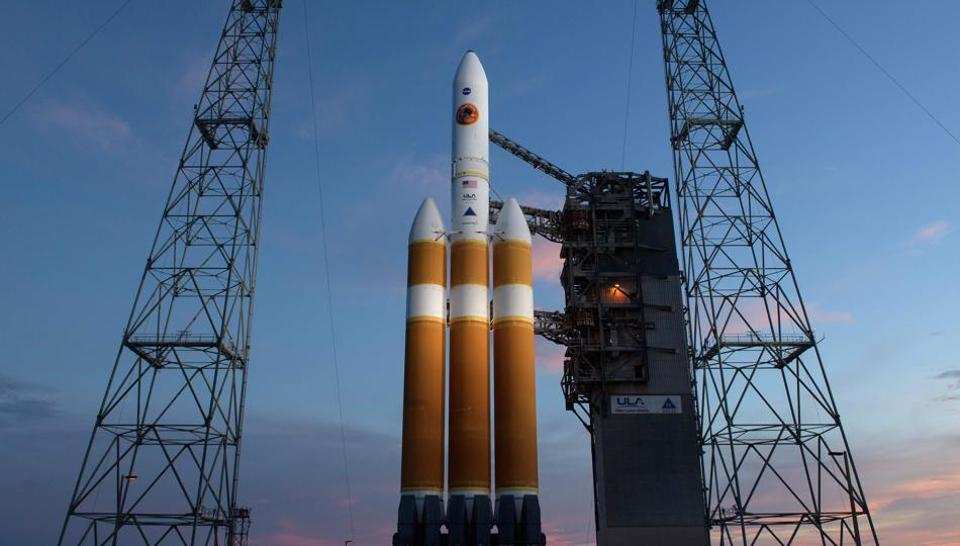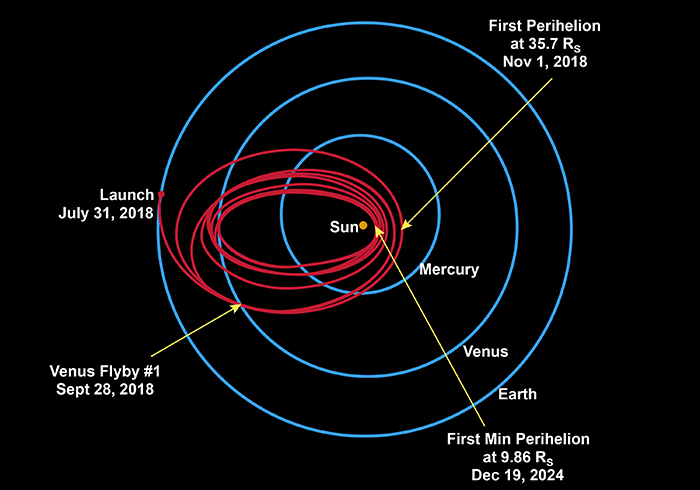NASA’s much-anticipated space mission to the Sun was recently launched on August 12, Sunday, from Cape Canaveral when a small car-sized spacecraft dubbed as Parker Solar Probe was launched atop United Launch Alliance Delta-4 Heavy rocket which pushed the spacecraft at a speed that could take it to the Venus in 52 days which is faster than any spacecraft has ever been to an another planet. The spacecraft is currently on an autonomous flight en route to the Sun with gravity assists and flybys that it will take from Venus until it reaches the first perihelion of the nearest to the Sun on November 5, 2024.
The spacecraft was originally slated to launch on July 31, however, the launch was delayed and it finally took off on August 12. It is expected to reach closest to the Venus at 4:44 a.m. EDT on October 3 when it will take a slingshot to correct its path towards the Sun where it will reach the first-time ever closest to the Sun at its perihelion on November 5, 2024, at 10.27 p.m. EST at a distance of just 15 million miles from the sun’s surface. This will effectively break the record set by U.S. German Helios 2 mission which whipped past the sun in April 1976 with the closest distance of 27 million miles.
The Parker Solar Probe is named after a physicist at the University of Chicago, Eugene Parker, who discovered the solar wind. Developed on a budget of $1.5 billion, the mission has been one of the to-do items on the NASA’s list for six decades now. The probe carries four sets of instruments that will capture the magnetic field, electric field, characterize particles and a tonne of other data that will help understand sun’s atmosphere i.e. Corona like never before along with the white light images that it will capture and downlink back to the Earth via high gain antenna that it already deployed autonomously.
The spacecraft weighing 1,424 pounds deployed its two solar panels right after it was deployed in the space after which, its high-gain antenna was unlocked on August 13. Further, its fast-spinning reaction wheels and thrusters were ignited so that the probe can follow the path designed and planned by the engineers with precision and stability. Further, it has deployed most of its instruments suits exposing various antennas that will capture various data along its 6 years of the mission when it will reach within the closest distance from the Sun.
Once it reaches the perihelion of the sun, it will undertake six flybys from Venus in spiral flight path that will take it closest to the sun at a distance of 3.93 million miles during which, it will accelerate to a speed of whopping 430,000 mph due to immense gravity imposed by the sun on the spacecraft where during this phase, it will conduct all its tests and experiments and transmit the data back to the Earth and that’s all while withstanding more than 6,000° Celsius temperature thanks to its heat shield.



